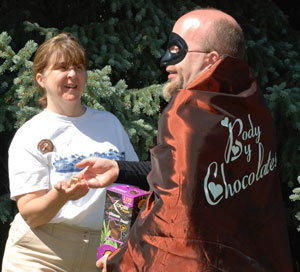For most people, little thought is given to the men and women locked within the walls of their state prison. However, numerous gangs run rampant throughout the Arizona State Prison system, and the majority of these gangs are comprised of male inmates who have ‘clicked up’ up along racial lines. The members of these gangs are die-hard: they investigate new arrivals on the prison yards, they keep track of inmate movements to learn where their comrades and enemies are, they have symbols and tattoos worn like badges of honor, and they maintain and adhere to the often strict rules and regulations of their people.
The Arizona Department of Corrections labels groups that meet these criteria as Security Threat Groups, and monitors them closely inside the prison system. Much of the following information and statistics presented in this article comes from personal knowledge and current information from the Arizona Department of Corrections STG web site, viewable here.
One Security Threat Group (STG) gang that has female leadership and members has been identified, and goes by the moniker “La Raza”. Little is known about this gang’s activity within the prison system, though it is thought they originally assembled under the umbrella of the decades-old, male-dominated Mexican Mafia (known as La Eme).
The original Mexican Mafia was reportedly started in Arizona State Prison Complex – Florence in 1974, and according to the ADC website’s, was “patterned after the California Mexican Mafia, which had been in existence for several years.”
Several years later, La Eme branched off into two groups: the Old Mexican Mafia and the New Mexican Mafia. The New Mexican Mafia plays by its own rules, or “reglas” and follows it’s own code. Members are bound by a “Blood In/Blood Out” compact, where members give their oath to remain loyal “por la vida” (for life).
Being a “rat” or a “traitor” is the worst offense possible, and is usually punishable by assault and/or death by other members of the gang. If a member decides to leave the gang while incarcerated, as is true with most gangs, he will need to seek Protective Custody from prison officials, and debrief (admit) as to the gang’s functions, members and deeds.
Mexican gang members incarcerated in the Arizona Prison system would not necessarily identify with either the OMM (Old M.M.) or the NMM (New M.M.). Some are loyal to regional gangs steadily rising through the AZ prison gang ranks, such as Grendal (whose members originate mostly in Glendale, AZ). Some, like the Border Brothers, have alliances with OMM and other gangs, but operate unto themselves as Mexican Nationals. The Border Brothers are ‘paisas’ (un-assimilated, Mexican-born), often here illegally, and thus ranking low among American prison gang hierarchy.
A gang that does hold significant ‘rank’ among prison gangs in Arizona facilities is the Aryan Brotherhood (AB). On the website Gangsorus.com, Robert Walker takes a close look at the history and make-up of this particular gang. According to Walker’s site, the history of the Aryan Brotherhood began in the San Quentin maximum security facility in California in 1964. Bikers of Irish descent began to band together, with themes of white supremacy to bind them, to defend themselves and intimidate other race gangs run by African-Americans and Mexicans.
Over time, the gang became less about race and more about money, prison politics and power. Members of the Aryan Brotherhood began to associate with other races in cases where the ends justified the means, though non-whites are still not accepted into the group. The AB is notorious for being well-organized, ruthless and greedy, as evidenced by their shift towards drug trafficking, money laundering and racketeering.
Though the group originated in California facilities, Arizona close proximity made it a logical place for the gang to reach out to, and the call was heeded. Numbers taken from the ADC website’s Security Threat Group (STG) section indicate the current Arizona Aryan Brotherhood has almost 400 “validated” members operating at levels of various rank and importance within the walls every day.
From the same ADC data, the number of individuals currently “validated” as being in La Eme (O.M.M) is significantly lower, hovering near 60, and the numbers for N.M.M. aren’t even listed. A black prison gang called Mau Mau (which is, in actuality, a combination of alliances) has more than 150 members throughout Arizona prisons. These are relatively small numbers compared to those of the AB, however one must consider that the AB is an older gang with the potential for having more overall members. One must also consider that many more inmates are gang members than are ever “validated” by prison officials.
How does an inmate become validated, and what does that mean anyway? If an inmate is validated, he has been identified and proven to be (or likely be), in the prison’s eyes, a gang member. An inmate can find himself validated if his cell is searched and significant gang artwork is found, if another inmate informs on him, if the inmate self-admits or by any number of other ways.
In Arizona, there is a point system which determines the seriousness placed on each offense; for example, it is more serious to have gang-related tattoos discovered (worth seven points) than with a drawing of a gang symbol on it (two points). Eventually, and if applicable, enough points add up to essentially “prove” through a preponderance of evidence that the inmate is a “validated” gang member.
Validated gang members of significant rank within the gang structure are often put under more secure lock-and-key, in the form of being sent to one of Arizona’s SMU (Special Management Unit) facilities. Low-ranking inmates, mere “soldiers”, especially those who essentially tell on themselves, are often housed in Protective Segregation with other ex-gang members and other inmates needing protection (child molesters, rapists, etc).
There are many prison gangs throughout America, and many inter-woven alliances, and the prospects for ever truly quelling this violent underworld seem slim. To understand it better may serve only to confuse you more, and the reality of the enormity of the problem will knock you for a loop. In too many cases, it’s simply kids killing kids and then going off to spend their lives in a box. On the streets, its for turf or money. In prison, its often racially motivated or debt related. In either case, its a tragedy.






